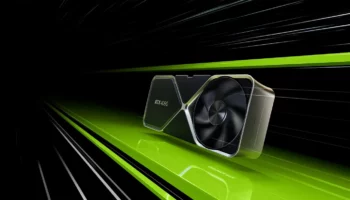NVIDIA’s DLSS 3 “Frame Generation” tech has been out for over a year, while AMD’s FSR 3 recently joined the ranks. Intel has yet to launch any frame-generation technology, but papers published at SIGGRAPH Asia 2023 indicate that preparations are underway. Dubbed ExtraSS, Team Blue’s frame generation algorithm will take a different path than AMD/NVIDIA’s existing solutions. While DLSS 3 and FSR 3 leverage frame interpolation (two consecutive frames to generate a third one in between), ExtraSS will utilize extrapolation.

Intel’s Frame Generation technology will combine spatial and temporal upscaling to generate high-resolution images, aided by low-resolution G-buffers and a neural network to refine the output. The upscaling pipeline requires two inputs: low-resolution frames and low-resolution G-buffers.
Joint Temporal and Spatial Super Sampling. Our method combines both spatial and temporal super sampling to generate new frames with high resolution. It requires two different types of inputs: half frames with low resolution rendered images and the other half frames only contain low resolution G-buffers.
Simply using two individual methods on frame generation and super resolution is redundant, since both of them re-use temporal and spatial information in the history. We design lightweight warping modules to unify the different inputs and provide good extrapolated initialization for our joint framework. Then, a neural network is used to generate high resolution images and refine the extrapolated frame, which is more efficient than a simple combination.
The ExtraSS algorithm combines the temporal and spatial inputs to generate an extrapolated image, which is then used by a neural network to produce a high-resolution result and the extrapolated frame. As you can see, the upscaler uses data from a single frame (both spatial and temporal) without needing a second like interpolation does. This reduces latency and performance (and per Intel) and produces a high-quality, temporally stable image.





